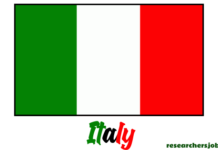PhD Positions in Synthetic Biology: The ComeInCell project is excited to announce the recruitment of 17 PhD students to engage in groundbreaking research at the intersection of biology, chemistry, physics, and engineering. This unique opportunity focuses on understanding membrane and condensate interactions to drive innovative biomimetic platforms, aiming to shed light on cellular processes and pathologies.
Designation
PhD Candidate
Research Area
- Synthetic Biology
- Membrane and Protein Function
- Cellular Processes
- Drug Discovery
Location
Various host institutions across Europe, including:
- Max Planck Institute of Colloids and Interfaces, Germany
- Max Planck Institute of Biochemistry, Germany
- INM – Leibniz Institute for New Materials, Germany
- University of Groningen, The Netherlands
- Radboud University, The Netherlands
- Spanish National Research Council, Spain
- University of Santiago de Compostela, Spain
- Institute of Science and Technology, Austria
- Centre National de Recherche Scientifique, France
- Tel Aviv University, Israel
- University of Siena, Italy
- Imperial College, UK
- University of Cambridge, UK
Eligibility/Qualification
- A master’s degree in a relevant field (Biology, Chemistry, Physics, Engineering)
- A strong background in research and experimental techniques
- Mobility conditions: Applicants must not have resided or conducted their main activities in the country of the recruiting organization for more than 12 months in the 36 months preceding the recruitment date.
Description
Successful candidates will partake in dynamic and interdisciplinary training programs within the ComeInCell project. This involves:
- Researching protein condensate interactions and membrane resilience
- Engaging in secondments in leading labs and collaborations with industry partners
- Contributing to the development of novel platforms to explore cellular processes potentially linked to neurodegenerative diseases and drug discovery.
List of Offered PhD Projects:
| Project Code | Project Title | Host PI | Institution |
|---|---|---|---|
| DC-01 | Light-driven exocytosis of synthetic cells encapsulating condensates | R. Dimova | Max Planck Institute of Colloids and Interfaces, Germany |
| DC-02 | Exploring the impact of protein condensates on membrane resilience and repair mechanisms | R. Dimova | Max Planck Institute of Colloids and Interfaces, Germany |
| DC-03 | Active spatial positioning of condensates on membranes by self-organizing proteins | P. Schwille | Max Planck Institute of Biochemistry, Germany |
| DC-04 | Synthetic neuronal mimetics to prototype and quantify membrane permeability and repair at the condensate interface | O. Staufer | INM – Leibniz Institute for New Materials, Germany |
| DC-05 | Biomolecular condensate interactions with the membrane in a dynamic membrane system | M. Exterkate | Heinrich-Heine University, Germany |
| DC-06 | Out-of-equilibrium networks for ATP- and building blocks to drive lipid synthesis and integration with condensates | B. Poolman | University of Groningen, The Netherlands |
| DC-07 | Condensate-mediated exocytosis and membrane localization in synthetic cells | E. Spruijt | Radboud University, The Netherlands |
| DC-08 | Phase-separated condensation of energy-dissipating self-organizing protein systems in crowded cell-like membrane containers | G. Rivas | Spanish National Research Council, Spain |
| DC-09 | Synthetic peptide scaffolds as functional protofilaments under confinement | J. Montenegro | University of Santiago de Compostela, Spain |
| DC-10 | Peptide protofilament interactions with polymeric membranes and RNA condensates | J. Montenegro | University of Santiago de Compostela, Spain |
| DC-11 | Active membrane expansion with condensates | B. Poolman | University of Groningen, The Netherlands |
| DC-12 | In silico membrane reshaping by molecular condensates | A. Šarić | Institute of Science and Technology, Austria |
| DC-13 | Photo-regulation of the interactions between membranes and protein condensates | C. Marques | Centre National de Recherche Scientifique, France |
| DC-14 | How can membranes control condensate formation and location? | R. Sorkin | Tel Aviv University, Israel |
| DC-15 | Light-controlled interactions between membrane and biomolecular condensates in artificial cells | F. Rossi | University of Siena, Italy |
| DC-16 | Dynamic polymeric synthetic cells: design, fusion, and condensate control for enhanced membrane behaviours | C. Contini | Imperial College, UK |
| DC-17 | Sculpting synthetic cell membranes with co-transcriptional RNA condensates | L. Di Michele | University of Cambridge, UK |
How to Apply
To apply, follow the host-specific application instructions provided on the individual project pages linked from the ComeInCell project website. Ensure that your application showcases relevant qualifications and research interests aligned with the specified PhD project.
Last Date to Apply
Applications are expected to commence in the first half of 2025. Specific deadlines will be outlined on the individual host institution’s project pages. It is advisable to check regularly for updates.
For further information, please contact the corresponding Principal Investigators (PIs) listed with each PhD project.








